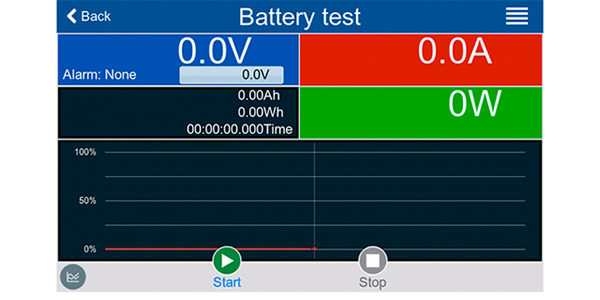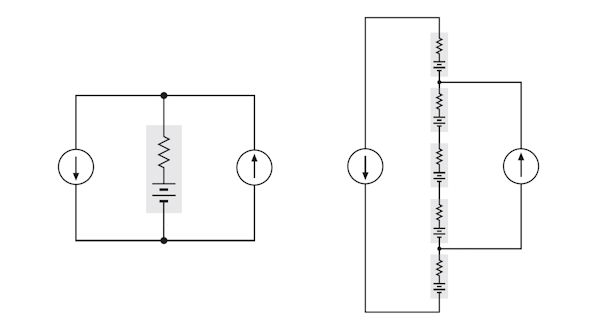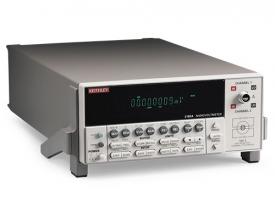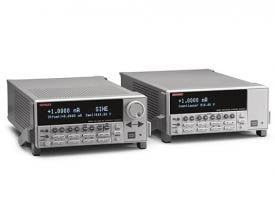연락처
텍트로닉스 담당자와 실시간 상담 6:00am-4:30pm PST에 이용 가능
전화 문의
9:00am-6:00PM KST에 이용 가능
다운로드
매뉴얼, 데이터 시트, 소프트웨어 등을 다운로드할 수 있습니다.
피드백
청정 수소를 활용하여 화학의 힘을 활용하십시오.
현대 청정 에너지 솔루션의 초석인 연료 전지 유형 중 하나는 수소 연료 전지입니다. 연료에서 화학 에너지를 전기 에너지로 전환하는 전기화학 반응을 통해 작동합니다. 기존의 연소 기반 전력 생성과 달리 연료 전지는 더 높은 효율성과 현저히 낮은 배출량으로 전기를 생산하여 지속 가능한 에너지 시스템에 필수적입니다.
그러나 기존 전력원과 마찬가지로 연료 전지 시스템은 의도된 사용 사례에 필요한 셀 성능, 내구성 및 수명을 제공하는지 확인하기 위해 광범위한 테스트가 필요합니다. 엄격한 테스트 프로그램을 작성함으로써 설계가 규제 표준을 충족하는 동시에 제품 품질을 최적화할 수 있습니다.
연료 전지를 개발하기 위한 기술
전체 연료 전지 스택 테스트
연료 전지 시장은 정부 이니셔티브, 경제적 인센티브 및 새로운 응용 분야와 같은 요인으로 인해 최대 30%의 엄청난 성장을 경험하고 있습니다. 산업용 트럭, 배달 차량, 장거리 트럭, 비상 발전기와 같은 분야의 수소 연료 전지는 운영 비용, 효율성, 탄소 상쇄 측면에서 매력적인 이점을 제공합니다. 낮은 운영 비용을 유지하면서 유연성을 확보하는 것의 중요성은 업계 전반에 걸쳐 기하급수적으로 증가했습니다. 셀 성능의 일반적인 지표는 연료 전지 스택의 분극 및 전력 밀도 곡선입니다. 이러한 곡선은 일반적으로 연료 전지 스택의 최적 작동 조건(온도, 습도, 전기 촉매 및 이온 교환막)에서 평가됩니다.
EA ELR 10000 시리즈와 같은 DC 전자 부하를 다양한 전류 또는 저항 프로파일로 프로그래밍하여 이러한 측정을 쉽게 얻을 수 있습니다. 이러한 전자 부하는 최대 30kW의 입력 전력으로 연료 전지 테스트에 이상적이며 시스템에서 최대 3.84MW로 확장할 수 있습니다. 내장된 임의 파형 발생기를 통해 동적 테스트가 가능하며, 회생 기능을 통해 연료 전지에서 발생하는 에너지의 최대 96%를 열로 소모하는 대신 회수할 수 있습니다.
내구성을 시험하기 위한 연료 전지 노화
연료 전지의 내구성 테스트는 제품의 안전성과 안정성을 보장하기 위해 항상 필요합니다. 연료 전지는 종종 애플리케이션에서 활성 에너지원 역할을 합니다. 연료 전지의 내구성 테스트는 긴 과정이 될 수 있으며, 일반적인 100kW 연료 전지 스택 시스템의 경우 매우 큰 운영 비용을 초래할 수 있습니다. 자동차 표준은 5,000시간(약 7개월)을 요구하며, 고정식 저장 애플리케이션은 10,000시간 이상을 요구합니다. 긴 내구성 테스트 시간을 단축하기 위해 스텝 및 삼각형 전위 사이클을 사용하더라도 테스트 과정에서 상당한 에너지 손실이 발생할 수 있습니다.
EA ELR 10000 시리즈와 같이 함수 발생기가 내장된 회생 전자 부하는 이러한 상황에 이상적입니다. 회생 기술은 사이클링 중 열로 손실될 에너지의 최대 96%를 회수합니다. 내장 함수 발생기는 스텝 또는 삼각형 파형과 같은 가속화된 테스트 프로파일을 허용하면서 방전 테스트 기능을 통해 누적 에너지 측정을 얻을 수 있게 합니다.
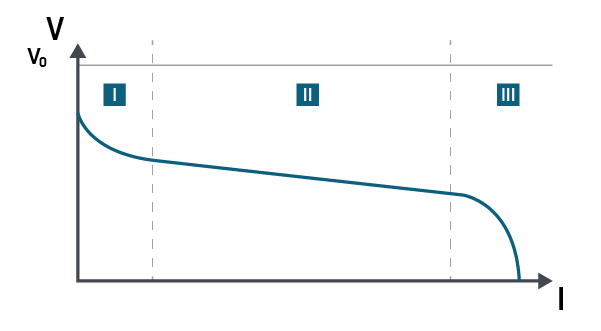
I: 셀은 전류 증가에 따라 비선형 전압 강하를 나타냅니다. II: 저항이 지배적이며 선형 V/I 관계를 가집니다. III: 화학 반응이 더 이상 새로운 에너지를 공급할 수 없을 때 전압이 기하급수적으로 떨어집니다.
자세히 보기:
연료 전지 시뮬레이션
연료 전지 기술을 다룰 때는 전기화학 시스템의 신뢰성을 필연적으로 고려해야 합니다. 에너지 시스템의 나머지 부분과 함께 연료 전지 스택을 시뮬레이션할 수 있는 능력은 개발 시간을 단축하고 전체 시스템의 신뢰성을 향상시킬 수 있습니다.
EA PSI 10000 시리즈 파워 서플라이에는 측정된 전류가 변할 때 출력 전압을 조정하는 UI(전압-전류) 테이블의 작동 기능이 포함되어 있습니다. 이 기능으로 분극 곡선을 모델링하여 연료 전지의 출력을 시뮬레이션할 수 있습니다.
EA 양방향 서플라이는 연료 전지 출력을 시뮬레이션하고 연료 전지 출력에서 전력을 흡수하여 회생하는 기능을 제공합니다. 이로 인해 단일 기기 또는 장비 랙이 30kW에서 최대 3.84MW의 시스템에 대해 이중 작업을 수행할 수 있습니다.
단일 셀 측정 이해
연료 전지 또는 연료 전지 구동 장치의 설계, 제조, 응용 또는 수리에 관여하는 사람은 모두 직접적인 전기 측정을 통해서만 얻을 수 있는 셀 데이터를 필요로 합니다. 이 데이터를 적절히 해석하면 연료 전지가 작동하는 방식과 이유를 이해할 수 있을 뿐만 아니라 작동 셀의 상태를 나타내고 수명을 예측하며 고장 메커니즘을 밝혀 특정 응용 분야에 적합한지에 대한 통찰력을 제공합니다.
Keithley 6221 AC+DC 전류원, 2182A 나노볼트미터, 2450 소스 측정 장치와 같은 기기는 개별 연료 전지의 정밀한 전기적 특성화를 수행하여 작용하는 전기화학적 과정을 이해하는 데 필수적인 도구입니다.



